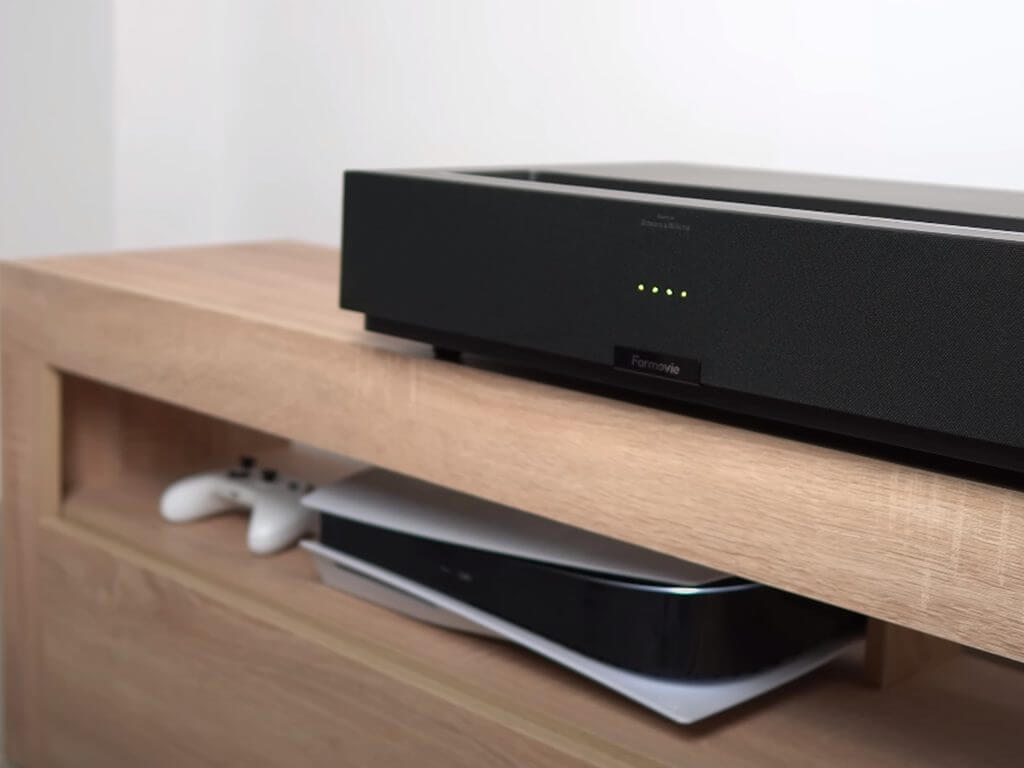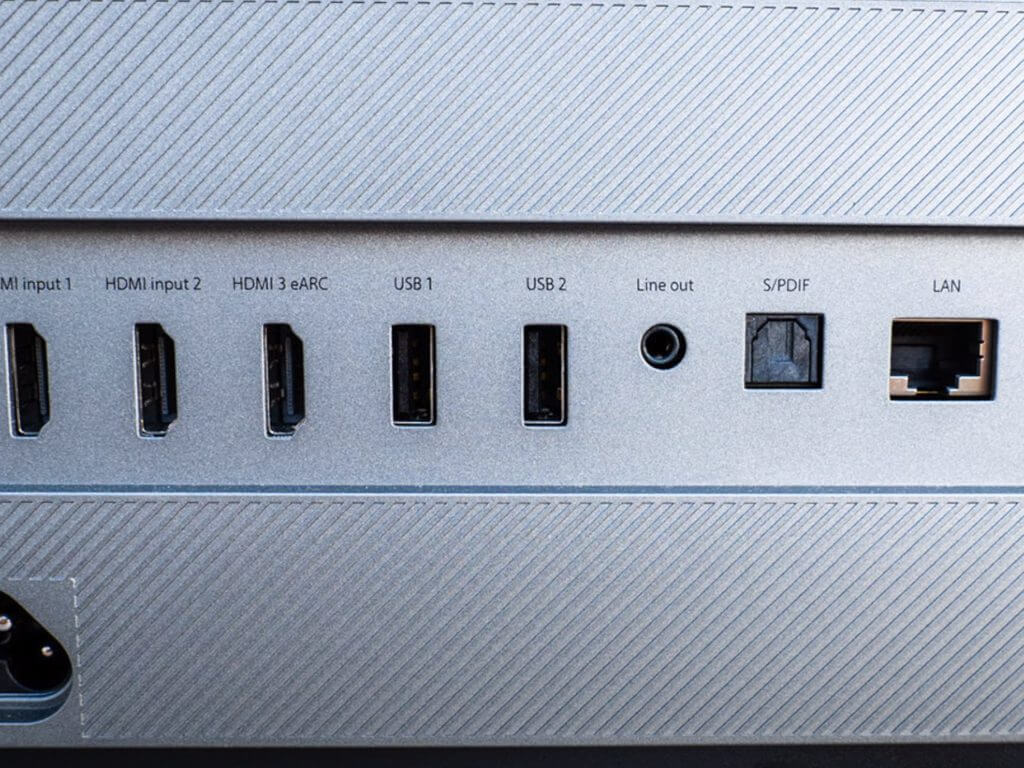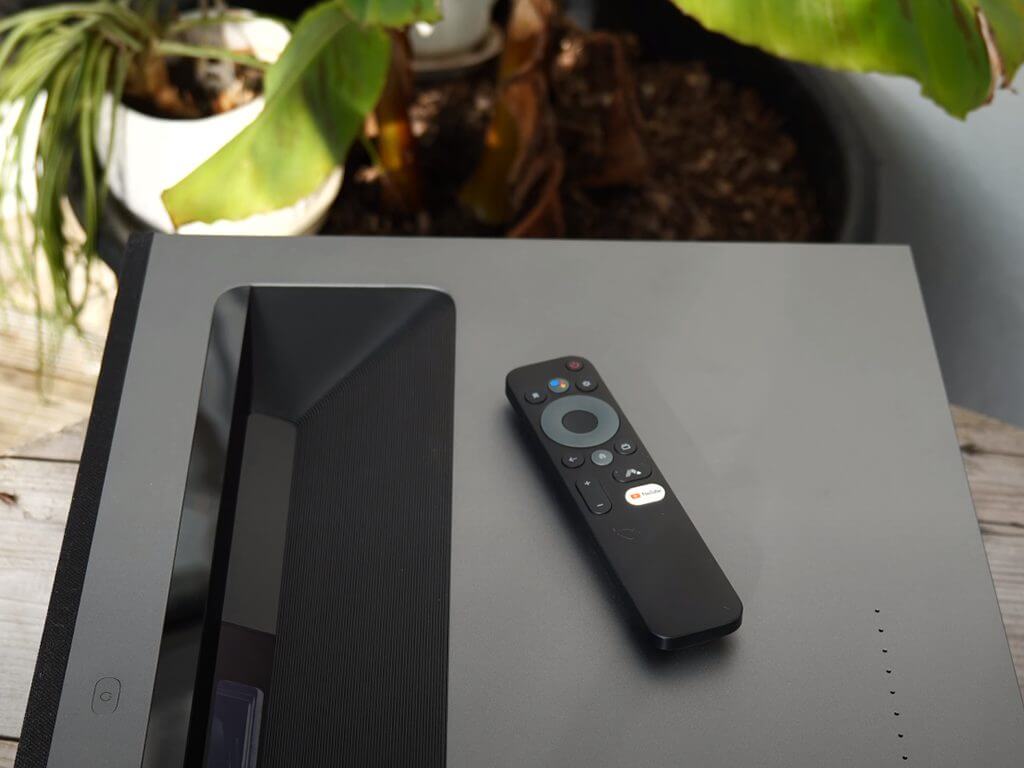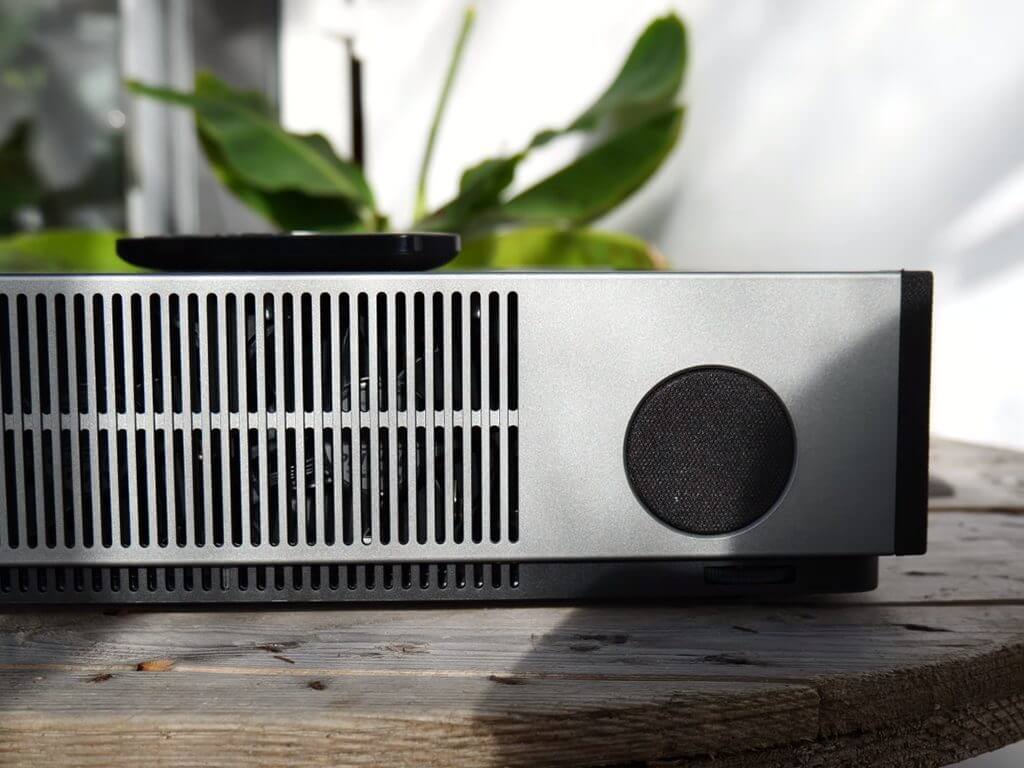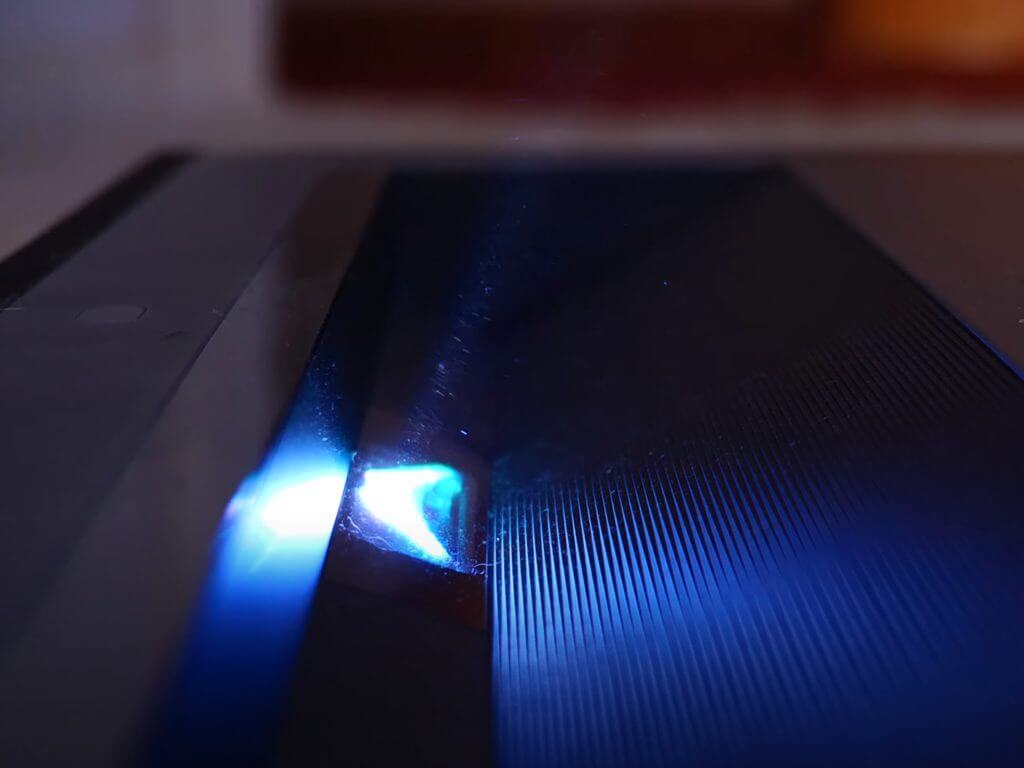Formovie Theater UST 4K laser projector review: Feature-packed
5 min. read
Published on
Read our disclosure page to find out how can you help Windows Report sustain the editorial team Read more
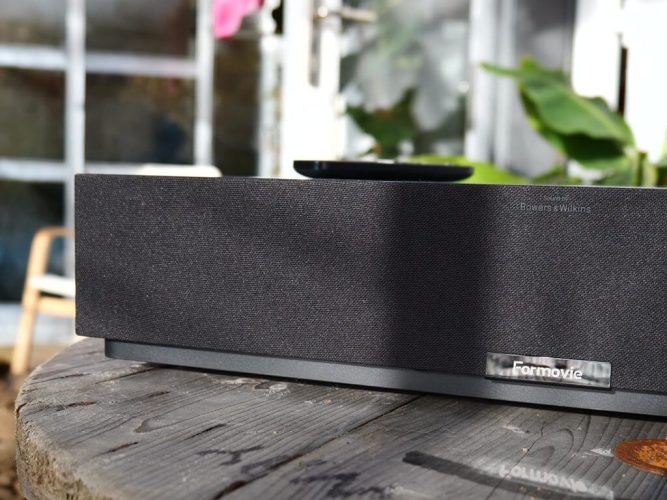
Starting at $3,499.00
Formovie isn’t new to the projector sector, but its latest Theater UST 4K laser projector may be the company’s best offering to-date while also checking every feature box along the way.
While the Formovie Ultra Short Throw 4K projector is chalked full of value-adds with its list of features, the question for most people might be, why pay almost three times more for a projector over a standard TV screen, and I believe for projector enthusiasts this UST triple laser projector sells itself.
| Specifications | |
| Dimensions | Recommended picture size |
| 550 × 349.2 × 107.5 mm/21.7 × 13.7 × 4.2 in | 80’’ to 150’’ |
| Weight | Keystone |
| 9.8 kg/21.6 lb | 8-Point |
| Color | HDR |
| Cosmos grey | Dolby Vision, HDR10, HDR10+ Decoding |
| Display | Refresh rate |
| TI DLP® | 60 Hz |
| Light engine | Contrast ratio |
| Laser whit ALPD® by Appotronics | 3,000: 1 |
| Native Resolution | Color space |
| 4K UHD(3840×2160) | 107% BT.2020 |
| Brightness | Audio codec |
| 2800 ANSI lm | Dolby Atmos, Dolby Audio, DTS:X, DTS-HD |
| Throw Ratio | Speakers |
| 0.23: 1 | Full range×2 + Tweeter×2 (30W) |
| By Bowers & Wilkins | |
Look and Feel
Formovie’s ultra-show throw (UST) projector comes in a rather large box to accommodate its larger-than-average footprint at 55 x 34.92 x 10.75 cm (21.7 x 13.7 x 4.2 in) which equates to the size of an old school audio receiver.
In addition, the Formovie also weighs a hefty 9.8 kg’s or (21.6 lbs.), however, the projector isn’t meant to be moved after setup, so the weight is negligible and in-line with other dedicated home projector theaters of this caliber.
The mostly plastic chassis of the Formovie is well constructed and dense feeling which houses the device in a “Cosmos Grey” exterior equipped with a large front facing speaker arrangement, two smaller speakers on either side, 3 HDMI 2.1 slots, 2 USB-A 2.0 ports, audio out, and Ethernet connection.
The connection ports all support the latest technology such as enhanced audio return (eARC) for HDMI 2.1 and 4K at 60 FPS as well as quick data transfers from the USB-A 2.0 ports for connected devices such as external hard drives, consoles, or streaming sticks.
As is the case with most UST projectors, the Formovie also houses its triple-laser array nestled at the top of the device near the front and is equipped with a light disturbance sensor that powers down the projection when the light source is interrupted by objects.
There are vents that flank the device and were audible during some streaming sessions.
Unfortunately, the Formovie isn’t equipped with onboard controls, which forces users to operate the theater using the proprietary remote.
The remote is sleek and straight forward with large enough buttons and dials that can be operated in the dark or from muscle memory as well as a dedicated YouTube button for users who haven’t jumped aboard the streaming stick train just yet.
Performance
Of all the projectors I’ve tested over the past three years, the Formovie was among the best thanks in part to its color calibration, clarity, and its implementation of Android TV 11.0.
At 2800 ANSI lumens the 4K clarity offers parity with LED, Plasma, LCD OLED, MicroLED and QLED screen reproduction in darker environments, and in brighter lighting conditions the picture quality is still substantially impressive on the Formovie out of the box.
For fans of sharp contrast and vibrant colors the Formovie may produce more matte color tones but the HDR10+ support helps to punch up picture quality a notch when desired.
It takes a bit of exploring and fiddling with the several picture modes, calibrations, and settings to nail a screen equivalent reproduction, but not by much.
Content such as Into the Spiderverse, Amazon’s Invincible, and Max’s Harley Quinn animated show really pop with the Formovie’s wide color gamut. The Formovie also does very well when rendering video game images while also keeping FPS high.
The downside of gaming on the Formovie is when boosting games with its motion-smoothing MEMC technology which presents an exceptionally smooth image but introduces noticeable input lag.
Acknowledging that using the Formovie paired with a dedicated projector screen plays a big part in image reproduction quality, a flat unobstructed wall should help maintain the projector’s quality as well.
With the Formovie coming in at $3K, adding another couple hundred may or may not be in the cards for an add-on sound system, but thankfully the onboard system holds up well.
The two 15w speakers tuned by Bowers & Wilkins produced a robust bassy sound and particle sounds are distinguishable just above 70% sound for most content that doesn’t include Michael Bay-like action or explosions. Fortunately, for audiophiles, there is also support for external audio set ups.
The entire Formovie package offers a great viewing experience, except for the noticeable fan noise during quieter scenes. I live in a home that’s constantly running the AC, but when the climate settles and the house is quiet, the projector can be heard throughout the viewing experience depending on the scene.
The fan noise seems to be independent of the settings, content, or position of the projector, and ramps up from near quiet to annoying rumba randomly.
Summary
At $3K+ the Formovie offers the high-end experience the price tag it accompanies with an intuitive interface powered with Android TV 11 alongside. As the company works out its out of the box Netflix situation, most customers will appreciate the bevy of other streaming content at their fingertips that includes Disney+, HBO, Hulu, and YouTube.
While there are other options in and around the same price as the Formovie, few offer the same sleek packaging or feature set. Getting past the fan noise, the lack of Netflix support, out of the box color calibration, the Formovie is worthy contender for purchase among the LG’s, Sony’s and Samsung’s of the industry.

